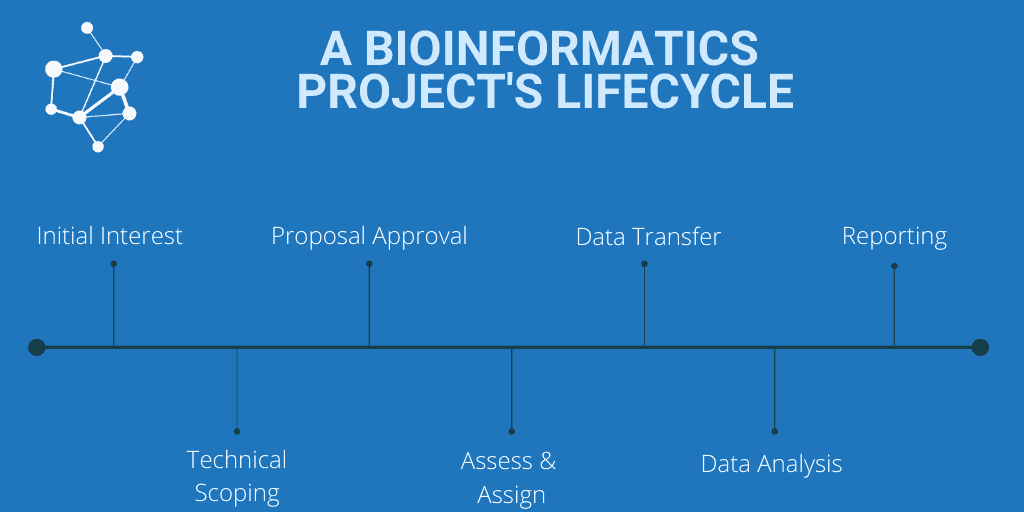Steps in a Bioinformatics Project
At Fios, each bioinformatics project is unique. Whether it is differences in the type of data being generated and analysed, or the therapeutic area that is focused on, no two client journeys are similar through our bioinformatics services.
How do I start a bioinformatics project?
A client can interact directly with our team to start a data analysis project with Fios.
Whether there is already data to be analysed or only an idea for a study with data to be generated, our team will engage with our clients to define a scope and advise on the next steps. Certainly, the scoping of a study can be completed faster with more information such as type of data or sample numbers.
Our team can conduct meetings or calls to find out more about the bioinformatics needs that a client may have. Often, this allows us to dig further on requirements and showcase anonimised examples of our analysis capabilities and the various research areas we work in.
Once a project has been scoped out, this can then start and move through the lifecycle stages below. Timelines will vary based on variables such as quality of data or if the client changes a project direction. You can find more information on the project lifecycle at Fios here.

Where do we go from there?
After the first project has been completed, there are many directions a client can take.
If only one, very specific piece of analysis needed to be conducted, the project closeout would be the final connection with Fios.
More often, other data analysis projects will follow. These could be direct follow-on projects, such as conducting data mining of datasets found through an initial data landscaping project. It could also be that further projects are completely separate from the original analysis.
Many of Fios’ clients use our services repeatedly. Whether we are acting as extensions of internal bioinformatics teams, or as outsourced specialists, our team offers a broad range of expertise and analysis experience.
Read more
Top reasons to outsource bioinformatics

